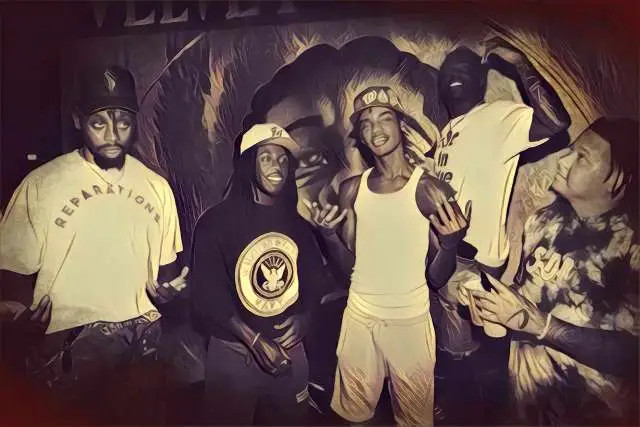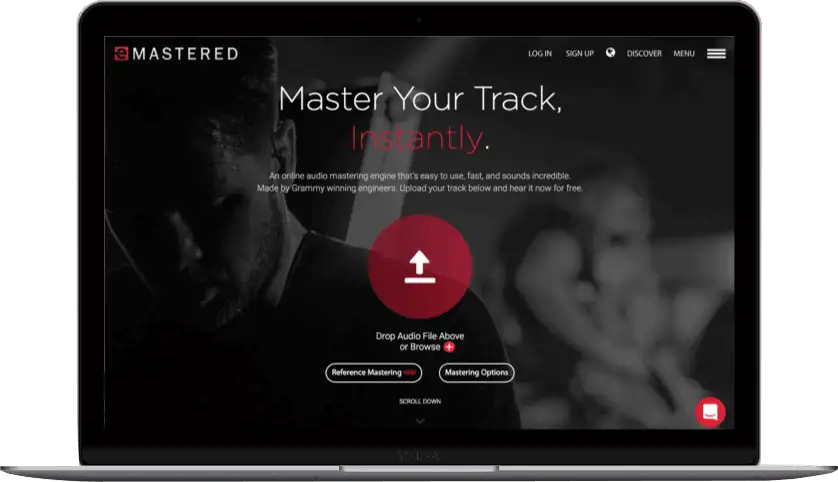Drill music has made quite a name for itself over the past decade.
Though it originally came out of Chicago around the early 2010s, it quickly crossed the ocean and evolved in the UK, where it found its own distinct flavor. The sound is intense, and there's no doubt about it.
Drill beats have hard-hitting 808s, dark, atmospheric melodic elements, and gunfire-like hi-hat rolls that come together to create a simple yet aggressive style of hip-hop. The genre has also had a major cultural impact on everything from fashion to street culture, and unlike many other fad genres that seem to come and go, I don't think drill music is going anywhere anytime soon.
If you want to make music like Russ Millions, Chief Keef, or Tion Wayne, stick around as I give you a step-by-step breakdown of how to make a drill beat from scratch.
Where Did Drill Music Come From?
Drill music didn’t just show up overnight. It evolved out of the streets of Chicago in the early 2010s, where raw, unapologetic stories about life in tough neighborhoods took place. Many also say it tore down the usual barriers that hip-hop labels once had up. No longer did you need a major label or a big studio to make it. Just a mic, a laptop, and the drive to share your story (as well as a Soundcloud account).
While Chief Keef was often credited with bringing it to mainstream attention with his 2012 track "I Don't Like," the groundwork for drill music and drill beats, in particular, was laid by producers like Young Chop and Lil' Reese .
They started experimenting with a darker, more menacing style of production that mixed traditional Chicago rap with heavy bass and sparse, sinister beats. This sound was influenced by the local drill culture in Chicago, where "drilling" referred to violent street conflicts .
Of course, as it spread, drill music didn't just stay confined to Chicago. It quickly found its way to the UK, where the UK drill scene took on its own twist with faster tempos, different flows, and its own distinct sound. In fact, listen to most UK drill beats, and you'll hear influences of grime.
Check out this UK drill beat from CZR Beats and Tion Wayne:
But what makes drill music and its aggressive beats sound so unique compared to other forms of hip-hop? Let’s break it down.
How To Make A Drill Beat in 5 Steps
Alright, now that we’ve set the stage, let’s get down to business.
Making drill beats might sound hard to any beginner, but it’s actually pretty simple once you break it down. Before diving in, here's what I recommend having:
- A DAW (Digital Audio Workstation) : Any DAW will work, but I recommend something more conducive to making beats, like Ableton Live, FL Studio, or Logic Pro X.
- Drum Samples (808s, snares, hi-hats) : Drill beats are all in the drums. I recommend setting yourself up with some solid sample packs that include 808s, snares, and hi-hats.
- Melodic Sounds : A good melody is what sets drill apart. Think dark synths, pianos, or orchestral elements. You can get a lot of these sounds using samples or VSTs. I recommend checking out Kontakt, as they have a large offering of pro VSTs.
- A Good Headset or Studio Monitors : To actually hear those low-end 808s, you'll want to snag a decent pair of headphones or monitors.
- A Little Patience & Creativity : Making pro drill beats takes time. There are several nuances you'll eventually get the hang of, so don’t rush the process. Get creative and experiment as you go!
Step 1: Finding the Perfect BPM
Drill music tends to live in a specific tempo range, and getting this right is the first step to nailing that signature sound. Most drill beats sit between 130-145 BPM , which is fast enough to keep that energy up but not so fast that it feels chaotic.
Now, there’s a bit of a distinction between US drill and UK drill when it comes to tempo. US drill tends to stick closer to the 130-145 BPM range, while UK drill likes to push a little faster, generally moving up to 151 BPM .
The choice here will largely depend on the vibe you’re going for.
Step 2: Create The Drum Pattern
When I make drill beats, I often like to start with the drums. Drill drums are pretty simple overall. You won't find intricate drum patterns in your typical drill drum beat, though because you're not getting a lot of space to layer, you want to make sure every sample you choose can hold its own.
Start With the Kick Drum (808)
The 808 kick should be the focal point of your drill beat, so make sure you find a solid sample. I use Ableton, so I'll often start by loading up an 808 sample I like into Drum Rack. However, if you don't have Ableton, you can use third-party plugins like Native Instruments Battery 4 to find or arrange your drill drums, or Future Audio Workshop's SubLab , which is one of the most flexible 808 creators I've ever used!
To start, set the 808's pitch to be in tune with your key (if you haven't decided on a key yet, then don't worry about this step). If you’re in A minor, make sure the 808’s root note (A) matches the key, or else it’ll sound off. You can adjust this in Ableton’s Sampler or Drum Rack by selecting the root note for your 808 sample.
Then, place your 808 kick on the first beat (on the downbeat) of your 4/4 bar. From here, you can begin to add in variations, placing kicks off the grid for that syncopated rhythm drill is known for. Don’t be afraid to experiment with slides on your 808s either. You can use Ableton’s pitch glide to make your 808s slide from one note to the next and make the track sound more organic.
Here's the drum pattern I ended up with:
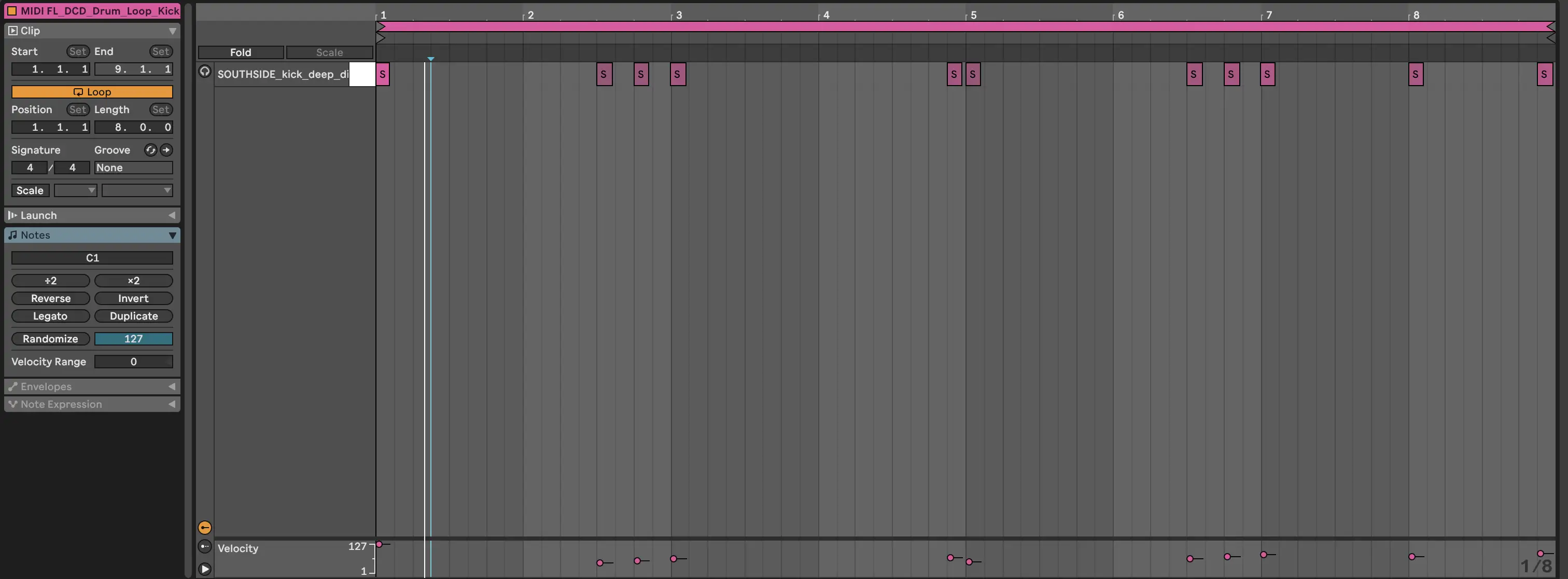
And here's what it sounds like on its own:
If you're using a kick and an 808, I recommend using sidechain compression to duck the 808 out of the way of your kick each time it hits to keep things clean. You can check out my sidechain compression guide for more info!
Layer in the Snare and Claps
Next, we'll lay down a snare and some claps. Drill snares tend to sound sharp and snappy. You can also layer a snare sample with a clap for a little extra life.
I'll usually start with the snare on the second and fourth beats of your 4/4 bar, which is a classic hip-hop positioning. From there, you can play around with it. Maybe even try shifting your snare slightly or adding extra percussive hits for that off-kilter feel.
I ended up liking the sound of just my snare. Here's what the pattern looks like:
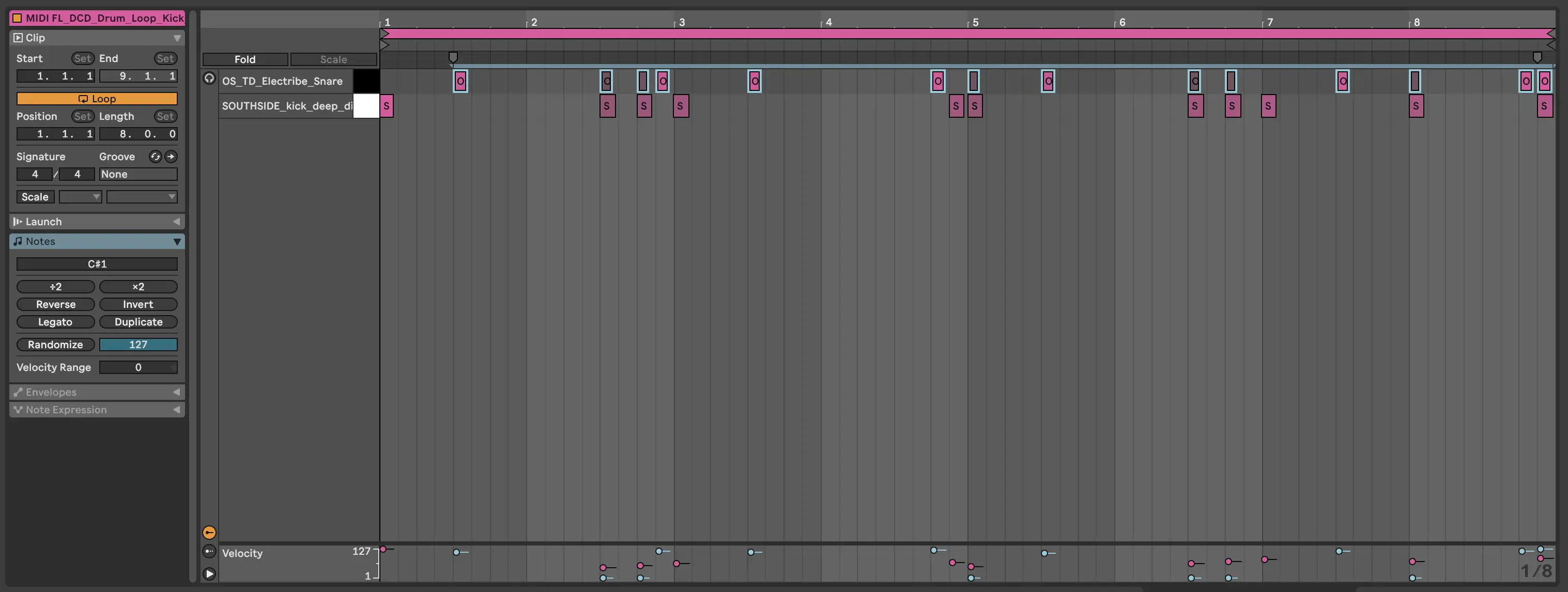
And here's what the kick and snare sound like together:
I also added the 808 bass into the above MP3 so you can hear it in context. If you listen closely, you may be able to hear where I sidechained the 808 to the kick.
Hi-Hats: Rolls and Stutters
In just about any drill beat, you'll hear a hi-hat pattern that is very akin to those you'd hear in trap music. Start by loading up a hi-hat sample in your drum rack, then program a basic 1/8 note pattern for starters.
From there, the possibilities are endless. You can use triplets, rolls, or swing to spice them up. There aren't really any rules here. For a more human feel, however, you can play them on a MIDI drum pad rather than program them in with your mouse. Here's the pattern I ended up with:
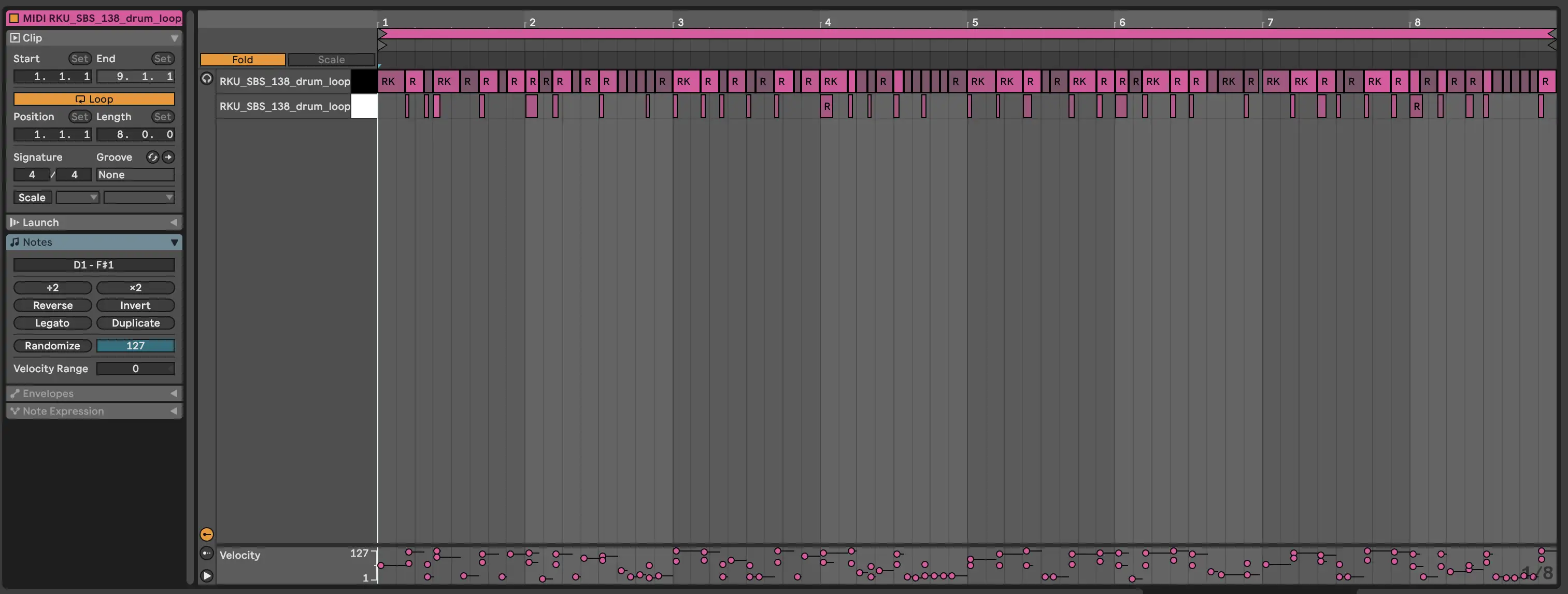
Notice how much I adjusted the velocity of each of the hats in the piano roll above to make them sound more organic.
Here's what the groove sounds like with the hi-hat pattern:
Add Percussion for Extra Spice
Finally, we'll add a few extra percussion elements for some spice. I'll usually add things like rimshots, clicks, snaps, and shakers, or throw in some additional snare and hat samples in the background to create texture and fill out the track.
In this case, I decided to rearrange my kicks, add a few more 808 snares and hat samples, and add some ancillary percussion (a few cowbells, some reversed shakers, etc.)
Here's what I ended up with:
Pro Tip: To make the percussion more interesting, experiment with panning some of the elements around your kick and snare.
Step 3: Get a Melody Going
Alright, now that your drums are locked in, we can add an instrumental layer. This is where you'll really set the tone of your track. Think eerie, haunting, and almost cinematic.
Remember, drill beats have a dark and grimy vibe, so you want your melody to reflect that. As I said earlier, drill thrives in minor keys, usually A minor , D minor , or E minor , so stick to those for the most authentic feel.
One option is to find a dark, moody sample . You can browse sample packs or go digging on a platform Loopmasters. Look for samples that have a tense, almost haunting feel to them. Maybe a piano loop with a slow, atmospheric build, or a creepy string melody. The key here is to find something that feels ominous and carries some weight.
If you want to get more hands-on, playing your own melody is an awesome way to get something totally unique.
However, if you’re using a sample, chop it up! You don’t have to take the sample as it is. Slice it into smaller parts, rearrange it, and tweak it until it fits the vibe you're going for. Don't be afraid to get weird with effects either!
I used a chopped and modulated string sample with a little bit of plate reverb in my drill beat, and decided to pitch the 808 bass down a few octaves to fit better. Here's the result:
Step 4: Arrangement
With your drums and melody locked down, it’s time to bring everything together and arrange your drill beat into something that better resembles a full track that you can send to artists to lay down vocals over.
Here's what a typical arrangement might look like:
- Intro (8 or 16 bars): The intro will set the vibe. I often like to let things breathe a little before the main beat kicks in. You can use a filtered version of your melody or drums to build tension.
- Verse (16 or 32 bars)
The verse is the meat of your track. The energy should be high, but not too intense to the point where there's no room to grow. Bring in the full drum pattern, along with the bassline (or 808) and main melody. Just make sure to leave enough space for vocals. - Hook/Chorus (8 or 16 bars)
The hook is your chance to let the energy peak. Bring in all your drums and some extra percussion and maybe something else to support the main melody. From here, you can repeat the verse and hook once more. - Bridge/Breakdown (Optional, 8 or 16 bars)
The breakdown (or bridge) should bring the energy down from the chorus. Here, you might strip things down to just the 808s and atmospheric sounds (like reverb-heavy pads or a filtered version of your melody). It’s a great chance to let the track breathe and create tension before hitting the drop again. - Outro (8 bars)
The outro is where I often like to bring everything back in and then slowly let it wind down to a close. You can either fade out the drums and melody slowly or do something a little more dramatic, like cutting everything abruptly or adding a final glitchy sound or vocal chop.
If you’re feeling stuck or unsure about how to structure your drill beat, a great way to proceed is to import a reference track into your DAW. This can help you visualize how a professional track flows and give you a solid "roadmap" to follow.
Just drop in a drill beat you like into your DAW and analyze its arrangement. Mark the sections (intro, verse, hook, breakdown, outro) and take note of how the energy builds and drops. You don’t have to copy it exactly, but having that structure as a guide can help you organize your ideas and give you a clearer sense of how to move forward.
Step 5: Mixing and Mastering
Alright, your drill beat sounds fire, but before you hit bounce or send it off to the artist, you need to make sure it’s clean, punchy, and professional. That’s why mixing and mastering are so important.
During the mixing phase, you'll make sure each element in your mix is playing nicely together.
Check out our article on how to mix music for more info!
In mastering, you'll get your track to sound its absolute best across all systems.
If you don’t have access to a professional mastering engineer (or just want a quick, easy solution), I highly recommend checking out our AI-powered online mastering tool here at eMastered. Built by Grammy-winning mastering engineers, this tool can quickly analyze your track and apply a professional mastering chain.
Here's what my final beat sounds like, for reference:
Final Thoughts
While drill beats definitely have a signature sound, there’s always room to get experimental and carve out your own unique style. Don’t be afraid to push the boundaries a bit! Drill, whether Chicago drill or UK drill, like any genre, evolved through experimentation, and there’s no one-size-fits-all formula.
For now, though, start by following this tutorial and getting a solid grasp on the basics of making drill beats. Once you’ve got the fundamental structure down, start breaking the rules a little bit to create your own sound!


